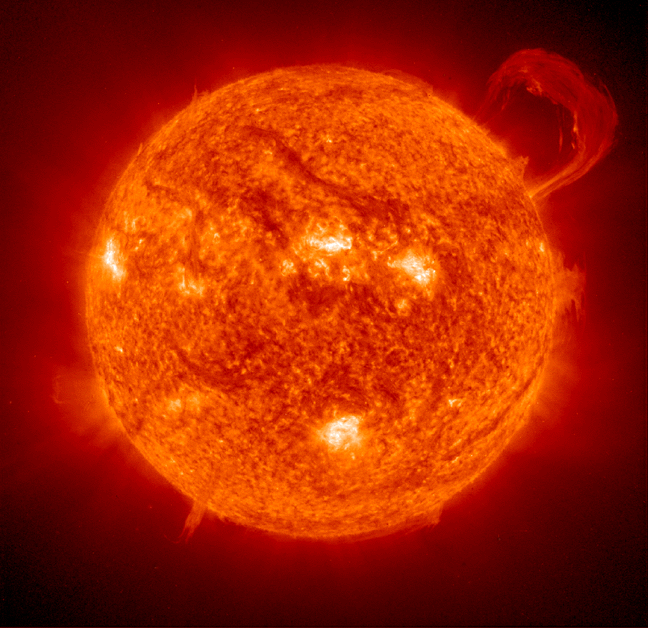To understand how space weather affects us it is important to define it first. We know that our star—the Sun—is a bubbling, boiling ball of fire. It constantly belches out great clouds of hot gas. This gas is all charged up with electricity, too. This stuff travels at astounding speeds, some of it right toward Earth! Thank goodness Earth’s magnetic field and atmosphere protect us from most of these blasts; otherwise, the Sun’s weather would be OUR weather.
However, we are still affected by the Sun’s atmosphere and its violent activities. We call this part of our weather “space weather.” Here are some examples of how bad space weather could affect us:
If forecasters are correct, the solar cycle will peak during the years around 2013. While it probably won’t be the biggest peak on record, human society will never be more vulnerable. The basics of daily life—from communications to weather forecasting to financial services—depend on satellites and high-tech electronics.
A 2008 report by the National Academy of Sciences warned that a century-class solar storm could cause billions in economic damages. “Bad space weather” can interrupt radio signals. It can damage satellites. Ships at sea might not be able to use any navigation equipment that relies on satellites. Additionally, two-way radios might not work. They could get lost or run aground in shallow water.
Electrical systems that bring power to our homes and business can be knocked out by this “bad space weather.”
And what about the astronauts living in the International Space Station or on a Space Shuttle mission? The Space Station and Shuttle have radiation shielding built in. But the astronauts certainly would not go out “space walking” during these periods. The extra radiation could make them sick.
Even airplane crew members can be affected if they often fly over either of the Poles where more radiation from space weather events comes down into the atmosphere.
Spacecraft and ground-based observatories have shown that Earth is located in the Sun’s outer atmosphere, buffeted by solar winds and pelted by hail storms of energetic particles. Moreover, the two bodies are actually connected by invisible threads of magnetism. A few years ago, scientists coined the term “heliophysics” to describe the emerging science of the Sun-Earth system. As a nod to the importance of the topic, NASA has set up a dedicated Heliophysics Division, and in 2007 the United Nations declared the “International Heliophysical Year” in hopes of spurring global involvement in this new field.
China is about to contribute a space-buoy known as “KuaFu,” named after a giant in Chinese mythology who wished to capture the Sun. Kuafu will be located at the L1 Lagrange point where it will sample the solar wind upstream from Earth. When KuaFu launches it will join a growing international fleet of spacecraft dedicated to heliophysics. NASA, the European Space Agency, the Russian Federal Space Agency, the Canadian Space Agency, JAXA and China are all making significant contributions; preparing for a “solar Katrina,” launching a new science, harnessing the talents of scientists around the globe.
Sources :
http://science.nasa.gov/science-news/science-at-nasa/2010/16jul_ilws/


Comments are closed.